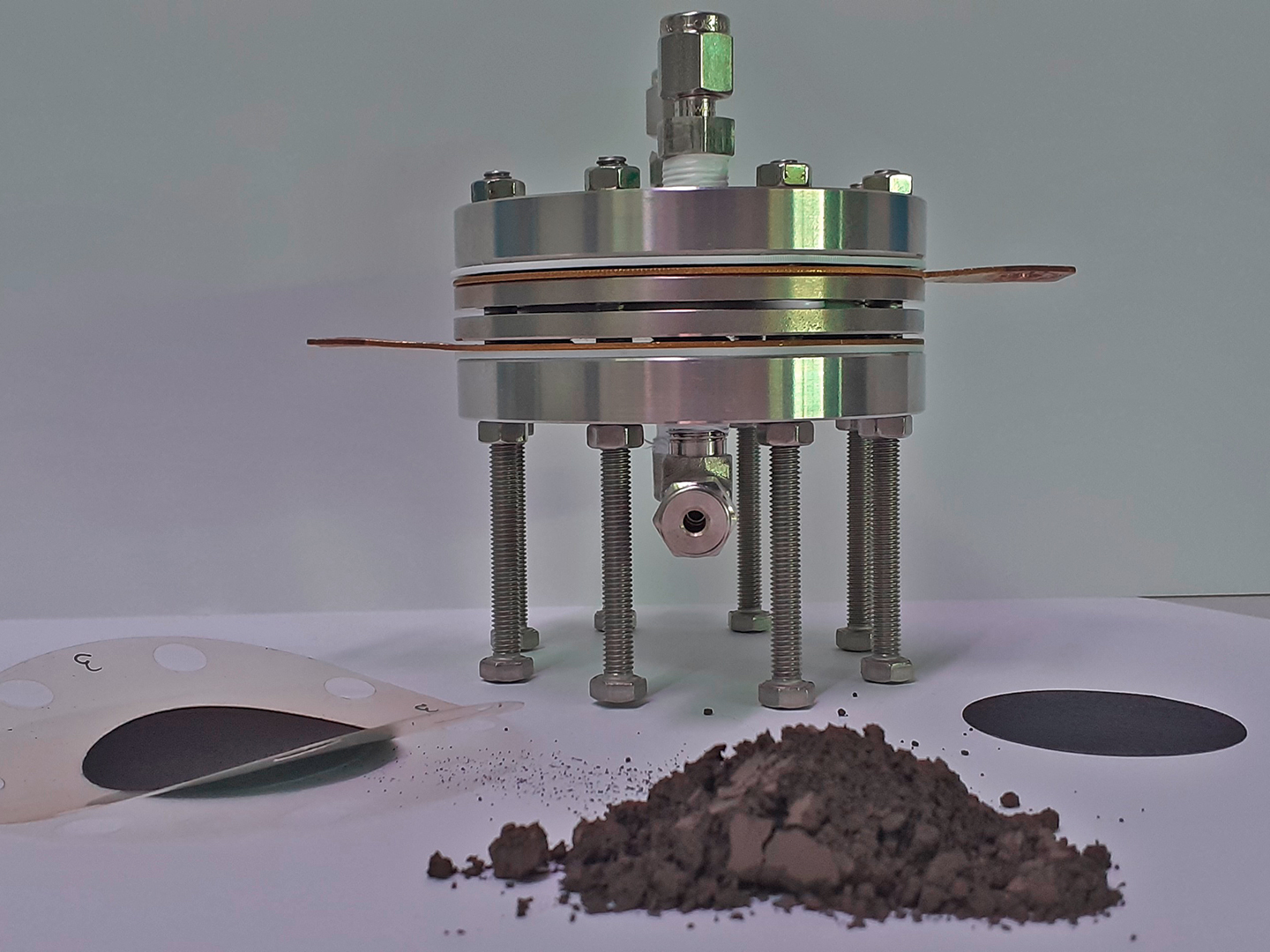Fraunhofer UMSICHT / From basic research to industrial application
Why marketable concepts of catalysts, electrodes and cells are still in short supply – and what needs to change
They can be used to produce green hydrogen and convert carbon dioxide into feedstocks for the chemical industry. Electrolysis technologies have increasingly come into focus in the context of climate protection, energy and raw material change. The result: a plethora of catalyst candidates, almost none of which, however, has yet reached the stage of applicability. Marketable concepts for electrodes and cells are also still in short supply. Scientists from the Fraunhofer Institutes UMSICHT, ISE and ICT, the University of Duisburg-Essen, the Ruhr University Bochum, the Center for Fuel Cell Technology (ZBT) and the Danish company IRD Fuel Cells have investigated the reasons for this and what needs to change for electrolysis to become an industrial application. They have published their findings under the title "Crossing the Valley of Death: From Fundamental to Applied Research in Electrolysis" in the "Journal of American Chemistry Au".

The scientists show what this looks like in practice, using catalysts as an example. On the one hand, research groups around the world are working on high-performance materials with sophisticated compositions, structures and morphologies. On the other hand, comparatively old or simple catalysts dominate technical and industrial applications. Two issues are identified in the publication as the cause: both insufficiently developed patenting strategies and insufficient implementation of promising materials under realistic conditions. According to Prof. Dr. Doris Segets of the University of Duisburg-Essen: "In any project involving catalyst development, it should be clearly defined whether a potential technical application is actually being considered for a particular catalyst candidate or whether fundamental research topics – e.g. mechanistic investigations – are the focus of interest. "If an industrial application is envisioned, researchers should ask themselves certain questions: For example, how complex or expensive would it be to produce the catalyst system under consideration? Can the catalyst be produced in sufficient quantities to meet industry needs? And what about the durability of the catalyst during storage and especially during operation?
The scientists also make similar observations about the manufacture of electrodes, cell construction and general benchmark criteria. In the end, they encourage researchers to venture beyond their immediate field and establish more intensive collaborations both between different disciplines and with industry." The development of suitable electrocatalysts is an interdisciplinary endeavor in which chemists, materials scientists and engineers must work hand in hand along the entire development chain," is the message. "We need to act together now to make a difference." By industrializing electrocatalysis, electrochemical hydrogen production – fueled by renewable energy sources – could play an important role as a pacesetter toward the climate protection envisioned in the Paris Agreement.
The complete article can be read here.
Further information
- Hydrogen (umsicht.fraunhofer.de)
- Catalysts for industrial use (umsicht.fraunhofer.de)
- Electrosynthesis (umsicht.fraunhofer.de)